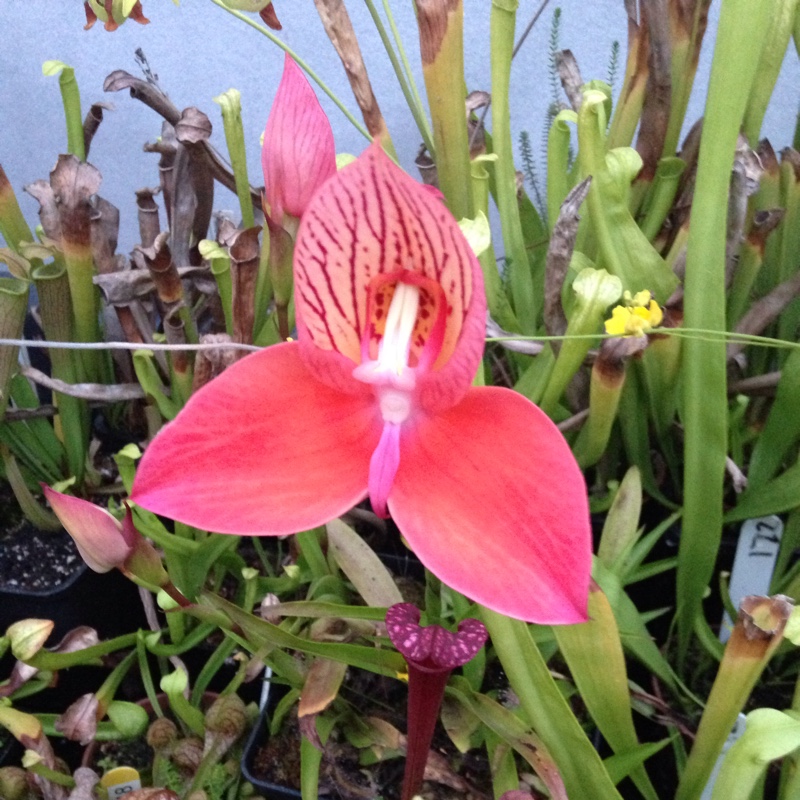
Disa Uniflora
Disa grandiflora orchid
'Disa' is a flowering perennial growing to 60cm in height, which spreads by stolons. The blooms can be 10 cm across with sepals of scarlet to carmine in color. The middle, upright sepal is pinkish on the inside with scarlet veins. The petals are yellow with red spots at their tops, but pale scarlet at their bases. It blooms during the summer months.
Contributed by @blueflytrap
-
Partial shade
-
Occasional watering
-
Not Frost hardy
-
Moist and free draining
Common name
Disa grandiflora orchid
Latin name
Disa Uniflora
type
Orchid
family
Orchidaceae
ph
5.0 - 8.0 Acid - Neutral
Plant & bloom calendar
-
Best time to plant
-
When the plant will bloom
full grown dimensions
 0.50 M
0.60 M
0.50 M
0.60 M
Disa Uniflora
'Disa' is a flowering perennial growing to 60cm in height, which spreads by stolons. The blooms can be 10 cm across with sepals of scarlet to carmine in color. The middle, upright sepal is pinkish on the inside with scarlet veins. The petals are yellow with red spots at their tops, but pale scarlet at their bases. It blooms during the summer months.
Where to plant.
From Early Spring TO Early Spring
Disa orchids thrive in humidity levels between 50-70 percent. The humidity level can be easily increased in your orchids growing area by placing your orchid on a humidity tray. These are found in orchid specialty stores and sometimes also in home improvement stores. Remember, it is important that your orchid’s roots do not directly sit in the water. When you have high humidity levels, it is equally important to maintain proper air movement to prevent orchid disease from developing. If you notice that your orchid is beginning to develop brown spots on its leaves, this is an indication that you need to increase air circulation. You can increase air movement for your orchid by placing an oscillating fan nearby.
Flowering
From Early Spring TO Late Winter
Many orchids do not have a flowering season and flowers may be produced at any time if the right conditions are being met. Terrestrial orchids grown outdoors will mostly flower in the summer months. Flowers can last for several months.
Planting young plants
From Early Autumn TO Late Autumn
Sometimes small plantlets (keiki) appear from the nodes on the flower stems. Detach the plantlets when they have developed several good roots and pot them up in orchid compost. Water them sparingly at first, but mist them daily. Always use a proprietary orchid compost. Ensure good light levels in winter, as these are essential to encourage flowering. An east- or west-facing window would be ideal. Move to a shadier spot in summer and protect from direct sunshine. When planting terrestrial orchids outdoors, plant in semi-shade, no direct sun at midday. A very suitable place would also be on the north side of a building. Most orchids are woodland plants and therefore prefer cool sites, which do not become too dry and hot during summer. Places where ferns thrive are also suitable for. Don’t plant your orchids close to trees or big shrubs because their roots are effective competition for water and nutrients! Autumn is the best season for planting. Spread out the roots in the upper 10 cm (4 inches) of the soil, the rhizome 2-3 cm (1 inch) below the surface, shoot buds upwards. Fill in the remaining substrate without compressing it, and water thoroughly.










